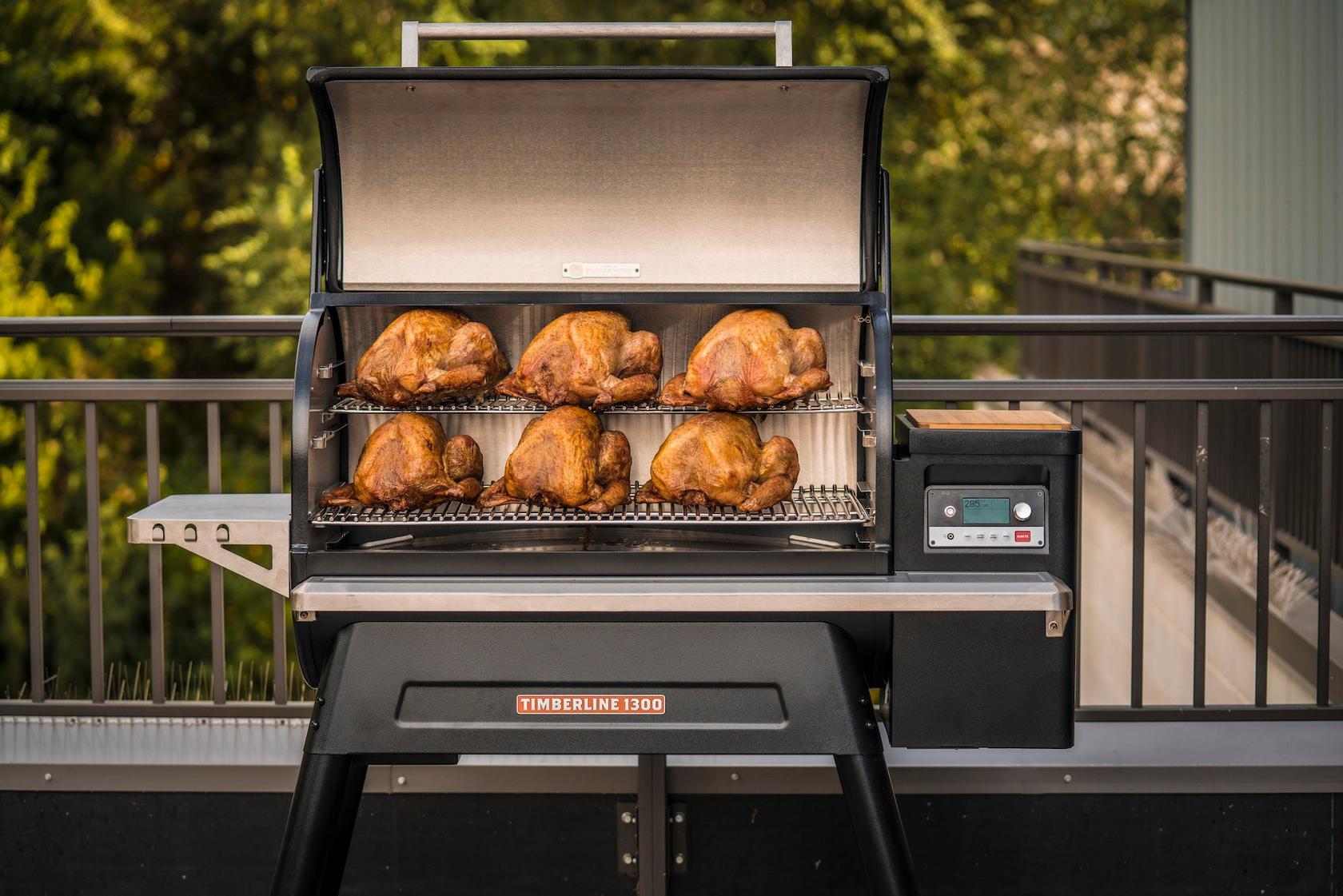
If you own a Traeger, you also own an outdoor oven. That’s because a Traeger, renowned for its ability to smoke foods to tender, wood-fired perfection, can also cook like an oven, which means you can easily roast all your favorites—turkey, pork, beef tenderloin, and more—without having to heat up your kitchen. Read on to learn how to roast on the Traeger.
What is roasting?
Roasting, like baking, is a dry heat method of cooking food in which the uncovered food is surrounded by hot air as in an oven. Though the two cooking methods are very similar, roasting tends to take place at higher temperatures, usually between 375°F and 500°F. The goal is to give foods a dark, often crisp. crust while keeping the interior tender and juicy. Indeed, while baking tends to concern batters or other liquid-y mixtures that thicken and even solidify during the bake, the word roast more often refers to cooking whole, solid foods, like roast meats or vegetables. A roast also connotes a cozy, familial experience and often a special occasion, such as roast turkey for Thanksgiving or a prime rib roast for Christmas.
How to Roast on a Traeger
Good news: If you can roast in your oven, you can roast on your Traeger. That’s because the Traeger’s set-it-and-forget-it technology allows you to easily set the grill to your desired temperature, which it will maintain throughout the cook. (Learn how to connect your Traeger to WiFi here so you can roast with ease.) Even better news: When you roast on the Traeger, your food gets kissed with a hint of wood-fired flavor.
Here are tips and tricks to roasting success:
Pick your temperature. When it comes to what temperature roast at, you have options. You can roast on the Traeger using high heat, lower heat, or you can mix the two. Straight-ahead high heat roasting works for smaller, tender cuts as well as for fruits and vegetables.
You can also start very hot to give foods a seared exterior and then lower the temperature to finish cooking more slowly with less risk of overcooking as is done for this beef tenderloin.
You can also roast at one steady moderate temperature from start to finish. Though this is the safest way to prevent overcooking, foods won’t brown as well. In such cases, you can sear the foods in a hot skillet (if not too unwieldy) before roasting (this is called sear roasting) or after for what is known as reverse searing.
Like many ovens, the Traeger features a fan to blow around the hot air inside the grill for more even and faster cooking. (This is called convection.) If you are roasting something you normally roast in an oven without convection, you may want to lower the temperature on the Traeger by 25 degrees and begin checking for doneness sooner.
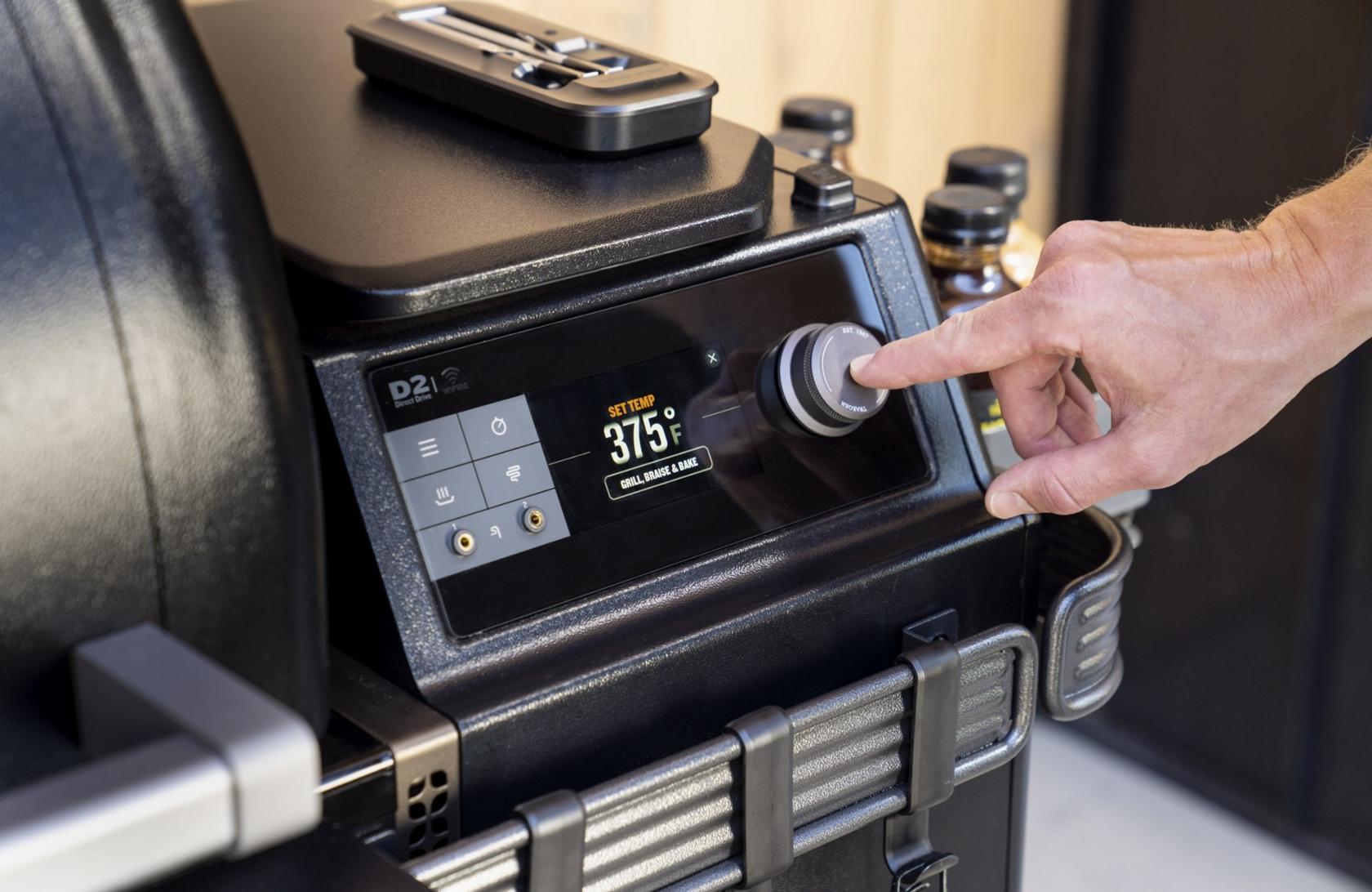
Prep and season your foods for roasting on the Traeger. Prepare your foods for roasting on the Traeger the same way you would for roasting in the oven. This includes any trimming and shaping such as spatchcocking a turkey.
Flavoring a roast can be as simple as sprinkling it with salt and pepper or an easy-to-use spice rub. Or it can be something more involved, such as brining a turkey for added flavor and to keep it juicy and moist. (See how here.) Pro tip: If you are not wet brining and have some time, pre-salt your meat before roasting by sprinkling it liberally with kosher salt and refrigerating for at least 8 hours and up to 2 days. (Do not rinse before cooking.) This step, often called a dry brine, keeps meats juicy while adding flavor, and, if there’s skin involved, helps it crisp.
Use a meat thermometer. Our recipes often give suggested times, but because of variables like weather and the size of the meat, the internal temperature is always the best way to discern doneness. We highly recommend using a leave-in meat thermometer, such as MEATER, when roasting meat. Though there may be some other doneness indicators for your roasted meat, such as juices running clear for roast chicken, the thermometer confirms that you have reached optimal doneness.
Another benefit of a leave-in thermometer: There’s no need to keep opening the lid to check as you would need to do with an instant-read thermometer. And because the MEATER thermometer can connect to an app (either ours or its own), you don’t have to hang out by the grill to track the internal temperature; you can monitor it remotely.
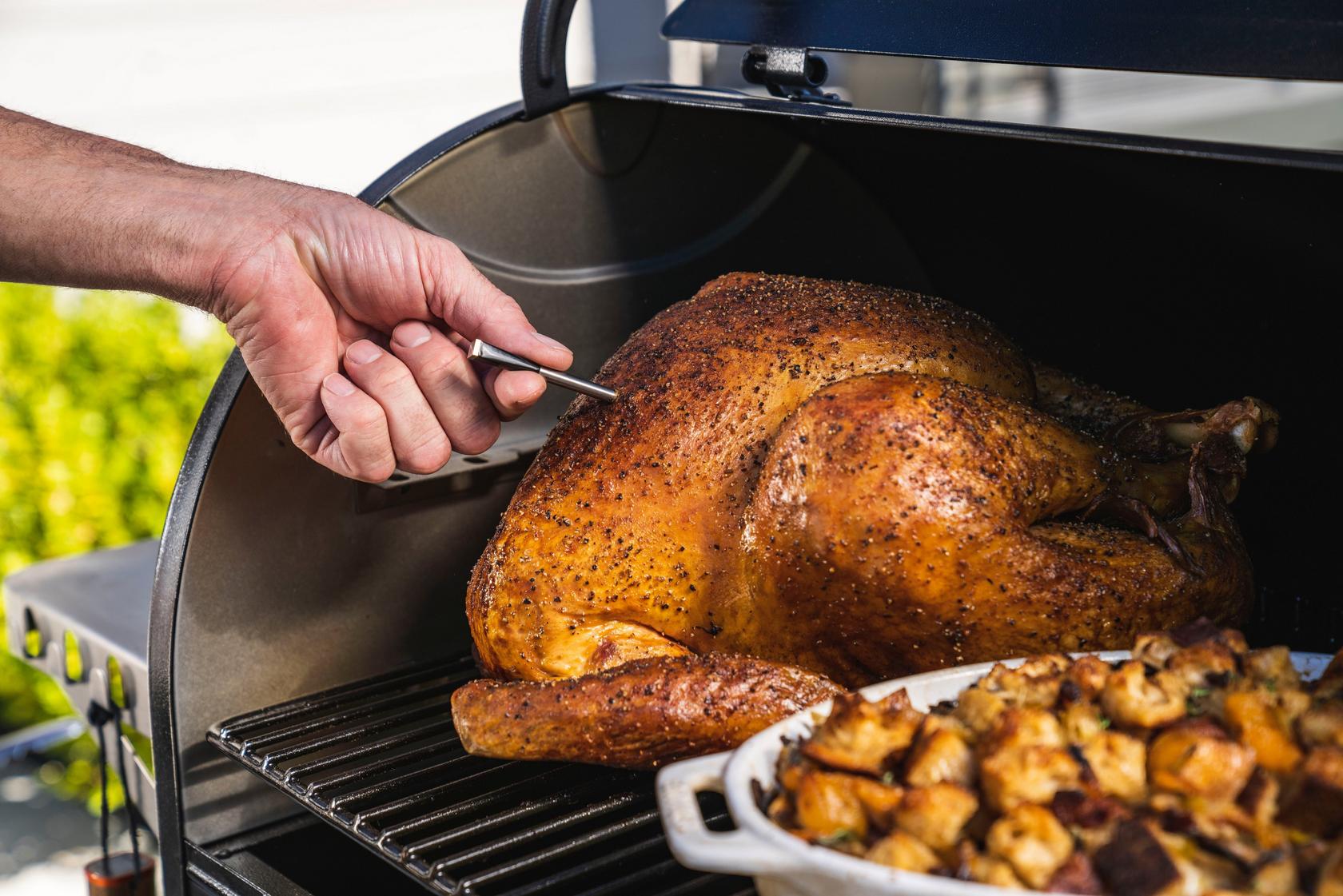
Roast directly on the grill grate or use a pan. You can roast foods directly on the grill grate or in a pan. The benefit of using a pan includes the ability to add other ingredients, such as herbs and other aromatics for flavor or even vegetables to roast along with the meat as in this roast chicken with potatoes. (We're also big fans of sheet pan roasting.) A pan also allows you to collect any juice from the roast that can then be used in a sauce or gravy. Roasting directly on the grate, however, can increase the overall wood-fired flavor.
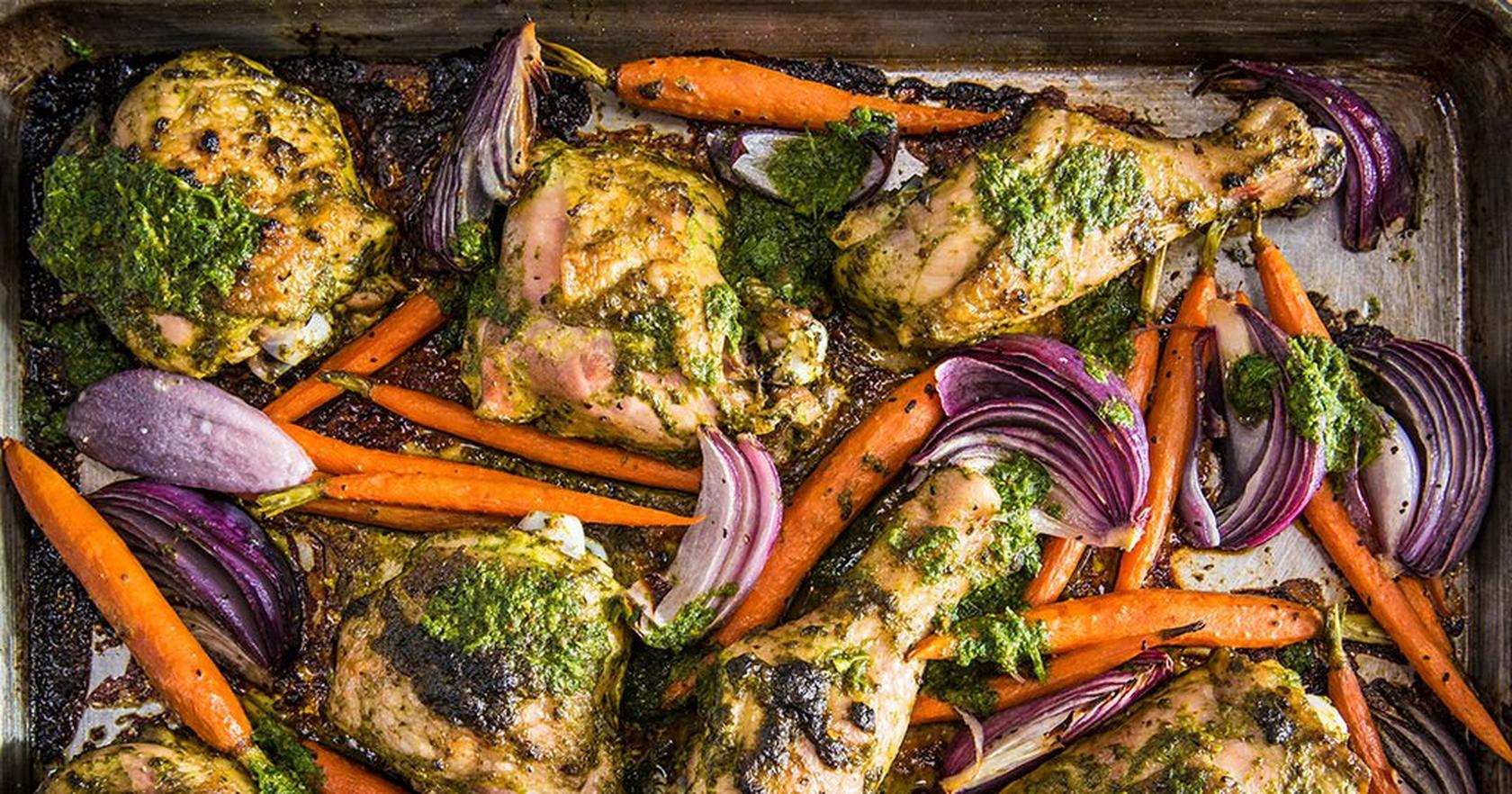
Keep the grill lid closed during roasting. Some roasts can take hours to cook. Resist the urge to open the grill lid to check on the meat or you will just be letting out hot air.
Let roasted meats rest. Once your roast is done, let it rest. This helps redistribute the juices inside the meat guaranteeing it turns out tender and juicy.
Roasts with the most
Below are some favorite roasting recipes.
Roast Pork Loin with Mango Salsa
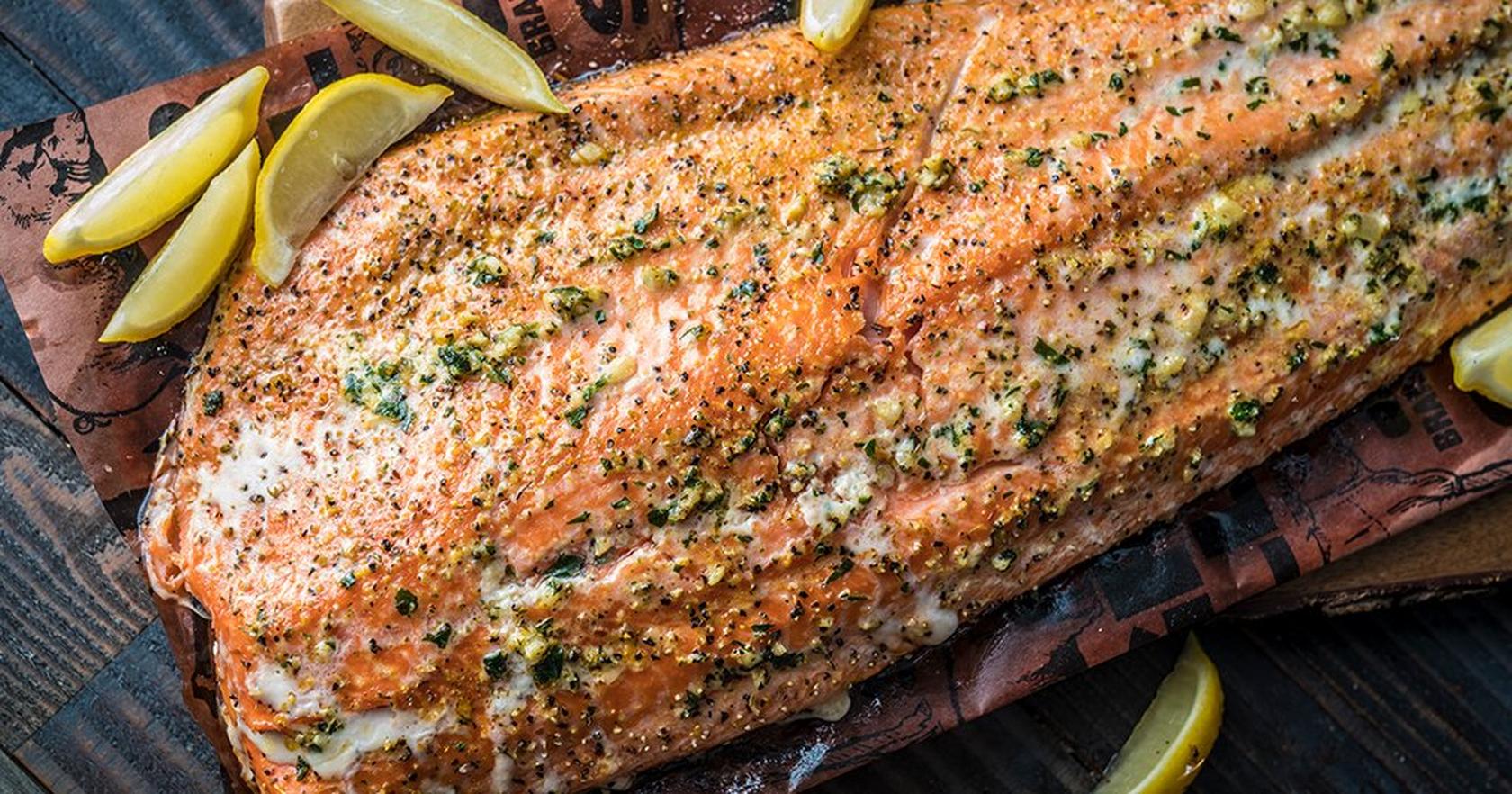
Traeger Roasting FAQ
Do meats roasted on the Traeger taste smoky?
Because higher temperatures produce less smoke, food roasted on the Traeger will not taste overtly smoky. Instead, they will offer a delicious hint of wood-fired flavor.
Can I smoke and then roast?
Indeed, you can. This can give you the best of both worlds, deep smoky flavor plus a beautifully browned exterior. Start the meat at 225°F to 250°F before cranking up the heat to finish as is done in this delicious Traeger Prime Rib.
What vegetables take best to roasting?
Generally, heartier vegetables, like potatoes, carrots, and squash take best to roasting. Most vegetables require a coating of oil or other fat for best results. We’re also fans of roasted cruciferous vegetables, such as cauliflower, broccoli, and brussels sprouts. The high heat cooking mellows and sweetens their bold flavor.
How long to roast asparagus?
It depends on how hot your grill is and how thick your spears are. At 350°F, it will take 15 to 20 minutes as in this recipe. For more char and a quicker cook, crank the heat. The asparagus is done when cooked to your ideal tenderness; to test, let a spear cool briefly and take a bite.
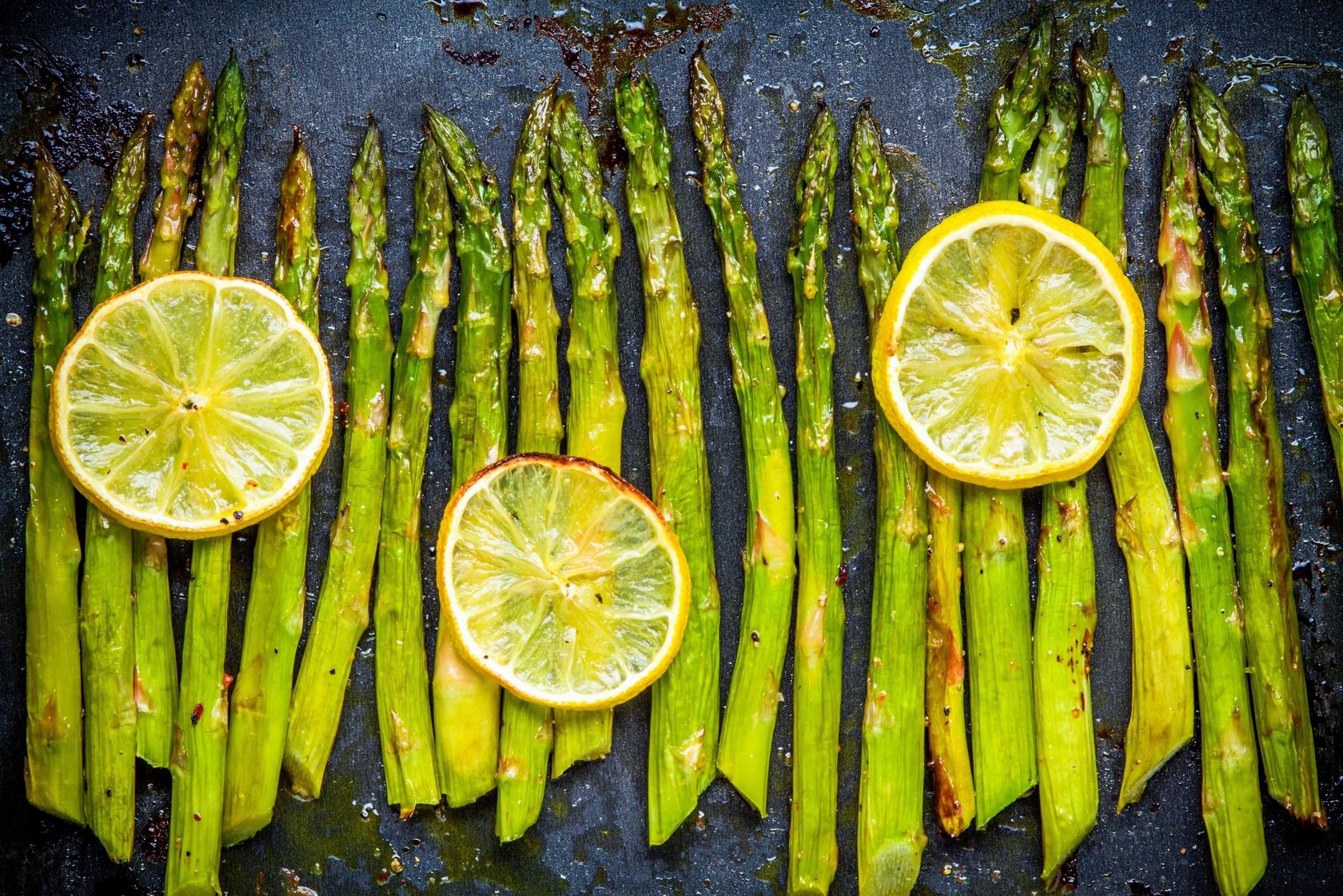
Can I roast fish?
Yes! Many kinds of fish take well to quick, high-heat roasting, including cod, salmon, halibut, and more. You just need to keep a close eye on them to avoid overcooking.
What should I serve with roasted foods?
Roasted foods go with all kinds of side dishes. Because they’re cooked dry, roast meats and vegetables pair especially well with sides that are creamy or saucy, such as a green bean casserole or creamed greens. If there is a gravy or au just involved, sides like grits or mashed potatoes are great for mopping up the juices.